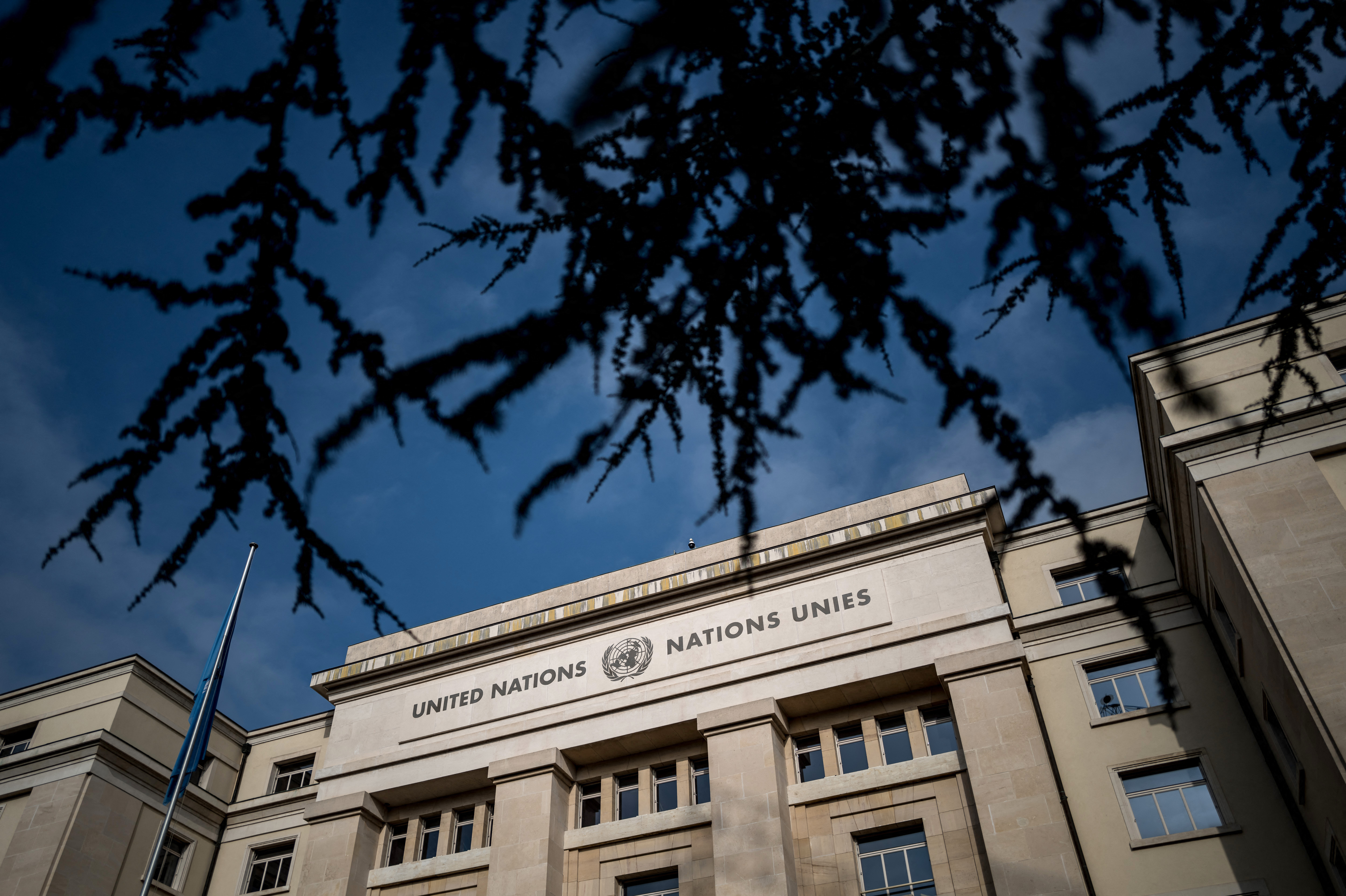Spotlight turns to coal at Glencore as pressure mounts on climate plans

Glencore is braced for a heated debate over its highly profitable coal-mining business when it meets shareholders this week as the group comes under pressure to tackle climate change.
A growing number of shareholders support a resolution asking the company to explain how its thermal coal production — the largest of any company outside China and India — is compatible with its climate goals.
Legal & General Investment Management, Allianz, Scottish Widows, Man Group and HSBC Asset Management have all backed the measure in recent days, as have proxy advisers Glass Lewis and Institutional Shareholder Services.
This Friday’s annual meeting comes as Glencore’s $23 billion hostile takeover bid for Canadian group Teck Resources has raised fresh questions about whether the Swiss miner might spin off its own coal business.

The division is highly profitable, accounting for 53 per cent of earnings last year, but is seen as dragging down Glencore’s overall valuation because of the associated climate risks.
Glencore had proposed to buy Teck, then split the merged business into a separately listed coal company and a standalone metals company — admitting there was more value to be created that way.
“This deal for me marks an interesting departure for Glencore, who have up to now said they want to keep coal as part of the portfolio, but wind down the assets,” said Tal Lomnitzer, senior investment manager at asset manager Janus Henderson, one of Glencore’s shareholders. “Whether or not this deal [with Teck] happens, the likelihood that they would split coal out has increased.”
From Australia to South Africa
Glencore’s coal resources stretch from Australia to South Africa to Colombia, and it primarily mines thermal coal, which is burnt in power plants. Producing 110mn tonnes of the fossil fuel a year, the company is the world’s largest thermal coal producer outside China and India.
The Swiss miner and trading house, based in Zug, also has a vast network of metals mines and industrial facilities, including battery recycling, aluminium smelting and copper and cobalt mining. Its commodity trading arm ships raw materials around the world and trades products from crude oil to carbon; the division accounted for one-fifth of the group’s earnings last year.
Glencore says it is focused on growing its metals business and producing materials such as copper, cobalt and nickel that are essential for the energy transition. Deals such as a $1.1 billion aluminium tie-up with Norsk Hydro, and plans to build Europe’s largest battery recycling plant in the Italian island of Sardinia, are among its recent investments in this area. The company has also laid out plans to double its copper production.
By contrast, its coal strategy is to responsibly run down its existing coal mines to the end of their lifespans, planning to close 12 between 2019 and 2035. On current projections, the group will still be producing coal after 2040.
Spin-off coal?
However, a handful of shareholders have been calling since 2021 for Glencore to spin off its coal unit, owing to the climate risks and the very different growth trajectories of the coal and metals operations.
“When you look at the structure of Glencore, you see there is a lot of value trapped there,” said Chris LaFemina, analyst at Jefferies. “The coal business appears to be depressing the valuation of the entire business.” The miner’s near-50 per cent stake in Viterra, an agricultural trading house, was also undervalued, he added.
Glencore’s chief executive Gary Nagle — who cut his teeth running the company’s coal business before taking on his current role two years ago — said that at present, shareholders wanted the coal business to stay inside the company. But if that position changed, he added, he would follow suit.
“If there was strong support from shareholders to divest, it is something we would do,” Nagle told investors in April.
Glencore has committed to reducing its emissions — both direct and indirect — by 15 per cent by 2026, and by 50 per cent by 2035, relative to a 2019 baseline. But it has refrained from setting a specific target for reducing coal output, which is its biggest source of Scope 3, or indirect, emissions.
Tricky AGM
At Friday’s AGM, the resolution on coal disclosure is set to throw all these issues into focus.
The resolution asks Glencore to disclose how its projected thermal coal production aligns with the Paris Agreement’s target of limiting global warming to 1.5C, and to detail how the company’s capex plans line up with those projections.
“This resolution is hugely important for assessing transition risk,” said Naomi Hogan, strategic projects lead at the Australasian Centre for Corporate Responsibility, which co-ordinated the resolution. “Both for now and for anything that happens next — for current shareholders and for future shareholders.”
The resolution does not call for Glencore to spin out its coal business.
Glencore has opposed the motion, arguing that it seeks to influence strategy, which is a matter for the board, and that it is unclear.

More
Glencore shareholders demand more clarity on coal plans
LGIM — the UK’s largest asset manager and one of the initial sponsors of the resolution — said it was disappointed with Glencore’s response to the resolution. Glencore held a one-hour meeting in March with the backers of the measure.
‘We were hoping that this engagement would start a little bit earlier, and that there would be a constructive follow-up,” said Dror Elkayam, ESG analyst at LGIM. “This is a shareholder resolution, but we want to work with the company . . . This takes more than one conversation.”
While the disclosures called for are not vastly different from what Glencore already discloses, proxy advisers pointed out that additional information would be helpful for evaluating future climate measures.
“The requested disclosures will be useful for shareholders when evaluating the Company’s 2024 climate plan,” wrote Glass Lewis in a recent research note. ISS similarly recommended voting for the resolution in its report, which also classified Glencore’s carbon risk as “high”.
The ACCR resolution may be unlikely to get the 50 per cent vote share needed to be binding, because Glencore’s biggest shareholders are expected to side with management. But the measure could still trigger a mandatory consultation process, if more than 20 per cent of shareholders vote against management and in favour of the resolution.
Such an outcome would echo last year’s AGM, in which 24 per cent of shareholders voted against Glencore’s climate plan, triggering a consultation process.

More
Glencore’s coal conundrum that won’t go away
The company consulted its “major” shareholders, formally engaging with about 85 per cent of the registry, but some smaller shareholders said they were left out.
Giuseppe Bivona, chief investment officer at Bluebell Capital, said his firm was not contacted even once, despite its outspoken criticism of Glencore’s climate plans and its calls for a coal spinout.
“When you refuse to talk to the most vocal shareholder, it is a message of contempt in general vis-à-vis all the dissenting shareholders,” said Bivona.
As Glencore navigates the AGM, questions over the future of its coal business will continue long after the votes are cast on Friday.
Its hostile bid for Teck could also be revived in the coming weeks. Teck’s board has refused to engage in deal talks, but Glencore has indicated it will consider approaching shareholders directly with an improved offer.
LaFemina, the Jefferies analyst, believed big changes could be afoot. “Clearly there is a major restructuring they have been considering: you merge with Teck, you spin off coal, you IPO Viterra,” he said, referring to the agricultural trading group.
Given that environmental, social and governance concerns were a growing factor, he thought a coal spinout could happen sooner rather than later. “The longer you wait,” LaFemina said, “the harder it will be to do”.
Copyright The Financial Times Limited 2023

In compliance with the JTI standards
More: SWI swissinfo.ch certified by the Journalism Trust Initiative











You can find an overview of ongoing debates with our journalists here . Please join us!
If you want to start a conversation about a topic raised in this article or want to report factual errors, email us at english@swissinfo.ch.